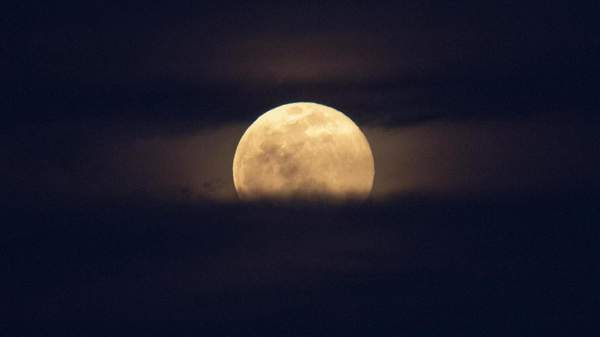Overview
The end of winter means warming temperatures, blooming flowers and summer inching closer. In 2024, it also means looking up. To close out August, a blue supermoon will take to the sky — or a super blue moon, if you prefer. Both terms fit, because the Earth's only natural satellite will serve up both a supermoon and a blue moon.
The date to point your eyes to the heavens: the morning of Tuesday, August 20. Stare upwards with your own two eyes at 4.25am AEST and you'll see a noteworthy sight at its peak. Of course, if you train your peepers towards the sky the evening before or afterwards, you'll still be in for a glowing show.
While super full moons aren't particularly rare — several usually happen each year — blue moons only tend to occur every few years. Wondering why else you should check this one out? We've run through the details below.
What Is It?
If you're more familiar with The Mighty Boosh's take on the moon than actual lunar terms, here's what you need to know. As we all learned back in November 2016, a supermoon is a new moon or full moon that occurs when the moon reaches the closest point to Earth in its elliptical orbit, making it particularly bright. Again, they're not all that uncommon — and because the supermoon on Tuesday, August 20 is a full moon (and not a new moon), it's called a super full moon.
A blue moon refers to either the second full moon occurring within a calendar month, or the third in an astronomical season with four full moons. August 2024's moon falls into the second category.
Despite the name, it isn't blue in colour. Also, despite the saying, they happen more often than you might think, but still only ever few years. The last monthly blue moon occurred in August 2023, and the next blue moon of either type isn't set to happen until the end of May in 2026.
The August moon is also a sturgeon moon. The name doesn't refer to its shape or any other physical characteristics, but to the time of year. In the northern hemisphere, August is around the time that sturgeon fish start to show up in big numbers in North America's lakes. Of course, that doesn't apply in the southern hemisphere, but the name still sticks.
When Can I See It?
As mentioned above, the blue supermoon will officially be at its peak at 4.25am AEST on Tuesday, August 20, Down Under — but thankfully it will be visible from Monday night Australian time.
The moon does usually appear full for a few days each month, so you should find the night sky looking a little brighter this week anyway.
That 4.25am AEST time applies in Sydney, Melbourne and Brisbane, with folks in Perth needing to look at 2.25am local time and people in Adelaide at 3.55am local time.
Where Can I See It?
You can take a gander from your backyard or balcony, but the standard advice regarding looking at glowing sights in the sky always applies — so city-dwellers will want to get as far away from light pollution as possible to get the absolute best view.
Fancy checking it out online? The Virtual Telescope Project is set to stream the view from Rome at 5.30am AEST on Tuesday, August 20, too.
For more information about the blue supermoon on Tuesday, August 20, 2024 in Australia, head to timeanddate.com.
Top image: NASA/Joel Kowsky.
